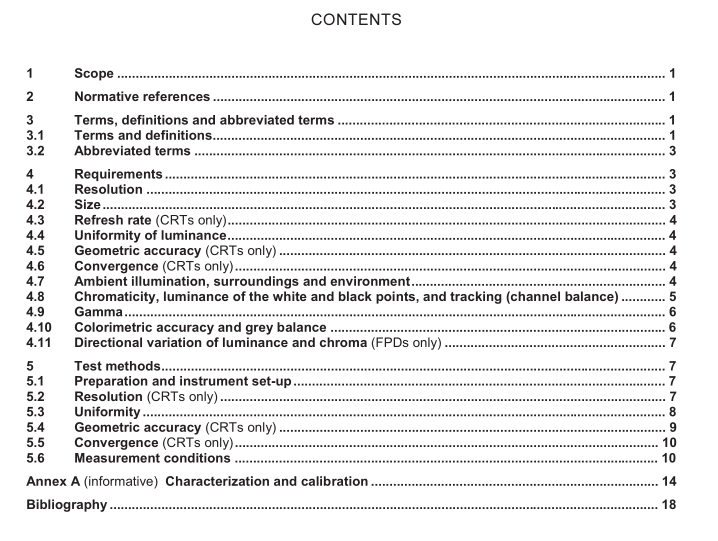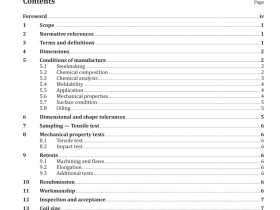AS ISO 12646 pdf download

AS ISO 12646 pdf download Graphic technology—Displays for colour proofing—Characteristics and viewing conditions
The refresh rate non-interlaced, shall be at least 80 Hz
4.4 Uniformity of luminance
The display should be visually uniform when displaying flat white, grey and black images. When measured asdescribed in 5.3, all luminance values should be within 5 % of the luminance of the centre and shall be within10 % of it. There should also be no areas of significant visual non-uniformity between the points marked inFigure 2.
For the entire display, measured at least at the positions stated in 5.3, the chromaticity of every neutral image(defined by equal digital values for R, G, and B) shall be within a radius of 0,01 (in u’, v’ as defined inSO 13655) from the chromaticity values measured at the centre of the display.
NOTE 1The uniformity of chromaticity is specified in 4.8.
NOTE 2The uniformity tolerance of a radius of 0,01 (in i’, v) of CIE 1976[12] corresponds to an average CIELABdifference of 1,7 at a ClE L* value of 5 and a difference of 8,7 at a CIE L value of 95.
4.5 Geometric accuracy (CRTs only)
When displaying the grid pattern specified in 5.4, the display should essentially be free of distortion. Theength of adjacent lines of the grid pattern shall be within 2 mm of each other and no line length shall deviateby more than 2,5 mm from the mean length.
4.6 Convergence(CRTs only)
When displaying the grid pattern specified in 5.4, all lines shall appear wholly free of colour fringing within thecentral region (defined as the area within half the linear diagonal distance). A small amount of fringing may beaccepted outside of this area but is not recommended.
4.7 Ambient illumination, surroundings and environment
4.7.1General
The luminance of the black level (R = G = B = 0) in the ON-state, measured with a spectroradiometer or acolorimeter in a dark room, as specified in 5.6, shall not be greater than 200 % of the black level reading in theOFF-state.
The reflective properties of the display surface in the OFF-state shall be judged visually in a darkroom using apoint source. The reflection of the point source off the screen should appear hazy and should smoothlydecrease as one turns away from the direction of specular reflection.
No strongly coloured surfaces (including clothing) should be present in the immediate environmentsurrounding the monitor.
NOTEDisplay reflective properties can also be determined as specified in ISO 13406-2 for “unwanted reflections”
4.7.2 Comparison of monitor and hard copy images
For the comparison of monitor and hard copy images, the following applies.









